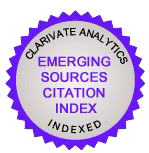«Преступление и наказание» в творческой биографии Ф.М. Достоевского
Palabras clave:
confession, reality, psychology, plot, timeResumen
Crime and Punishment, that became the confession of Dostoevsky himself and that opens his “Pentateuch”, marks a cardinal transformation of the writer’s creative principles.For the first time, the artistic task was to show the path of a person (and not just any person, but a person who has committed a mortal sin) to salvation, and both protagonists, Raskolnikov and Sonya, arrive at salvation through each other. Thus, the novel implements a key principle of Dostoevsky’s poetics as formulated by S. Bocharov: for Dostoevsky, a person before God is always a person before another person. For the first time, the protagonist is an ideologue, and a discussion between him and God begins. Thus emerge two crucial structuring principles of Dostoevsky’s great novels: the epiphany (of Christ) and a dialog (of characters with God and of characters with each other on the Glad Tidings). The dialog is developing in time and stops at the moment of crucial transition of a person into another existential state. The artistic time changes; the novel has several types of time: “the gray time” of Raskolnikov’s dream of his childhood when his protest combined with compassion is born; the novel’s time of the Gospels and the Old Testament touching on the eternal; the past that determines the present, and the novel’s future that anticipates the empirical time. The novel itself emerges into the “greater time” and engages in a dialog with Hamlet, Macbeth, Le Père Goriot, and other masterpieces of world literature.
A system of doubles appears, but they are not a hero’s copies “with the opposite sign” (like Golyadkin Sr. and Golyadkin Jr.), they are alternative paths toward the light (or away from it). Major points of convergences (and divergences) with the genre of tragedy become apparent.
Descargas
Descargas
Publicado
Cómo citar
Número
Sección
Licencia
Los autores conservan los derechos de autor sobre sus trabajos y garantizan a la revista el derecho de ser la primera publicación del mismo. Los artículos se publican bajo la licencia Creative Commons Atribución-NoComercial 4.0 Internacional (CC BY-NC-SA 4.0), lo que permite a los lectores y otros investigadores copiar, redistribuir, remezclar, transformar y construir a partir del material, siempre que se respeten las condiciones establecidas.












